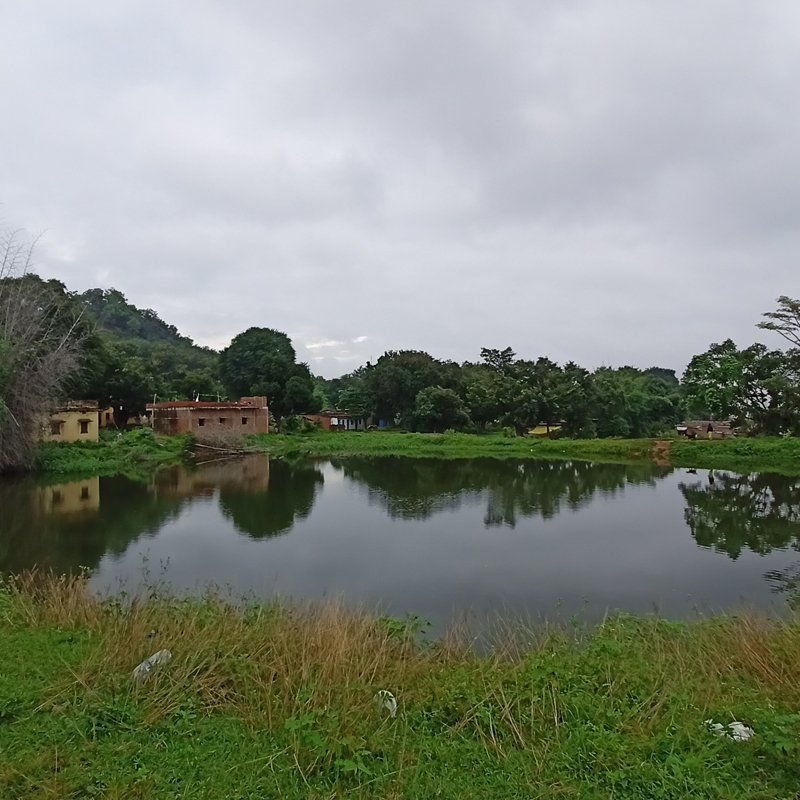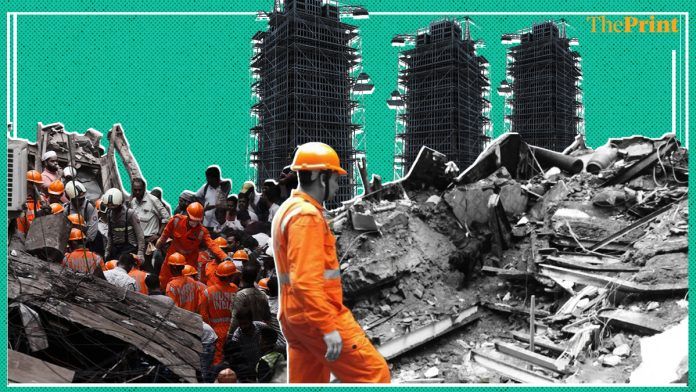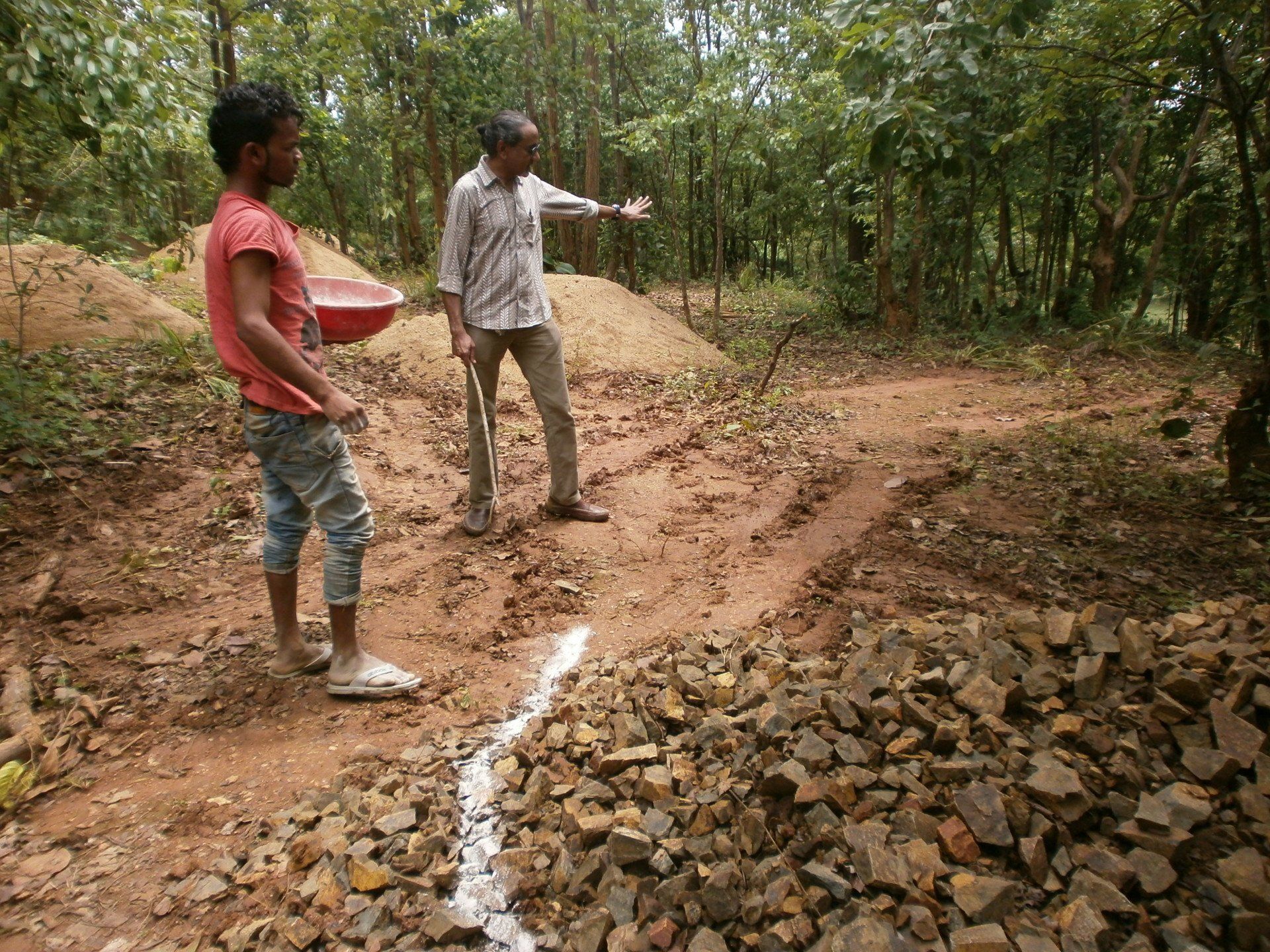I N D É
N E W S | M E D I A
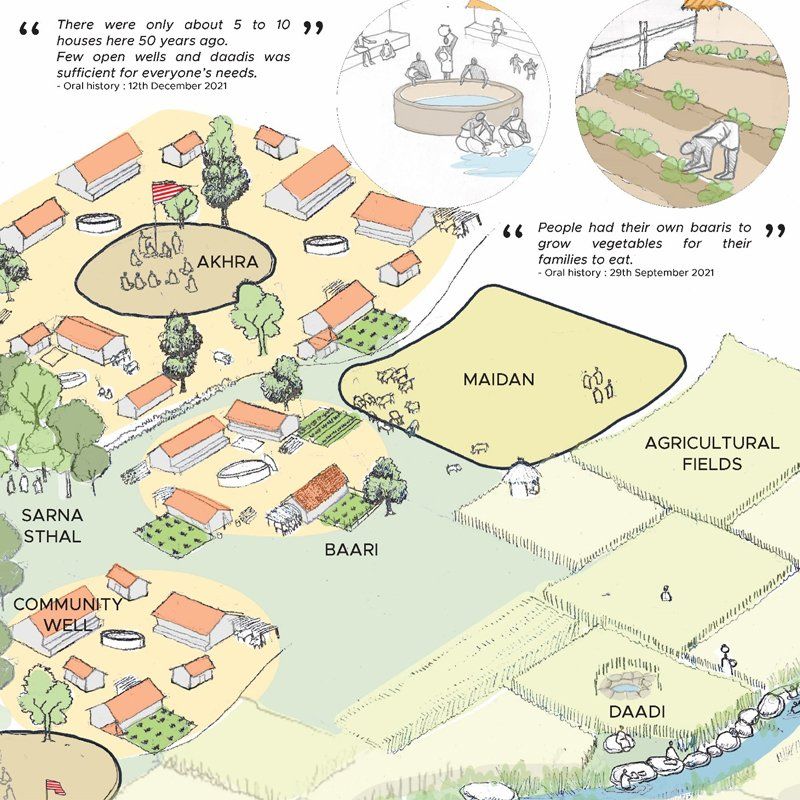
Being a member of the Adaptation Research Alliance, ARA (a global, collaborative effort to increase investment and opportunities for action research to develop/inform effective adaptation solutions) and an ARA Micro grantee, Integrated Design (INDÈ) was invited to organise a networking session at the Global Gobeshona Conference-2 (conference theme: exploring locally led adaptation and resilience for COP27). The networking session was titled ‘Situating Urban (City) Resilience within the City-Region’ and was held on 1 April 2022.
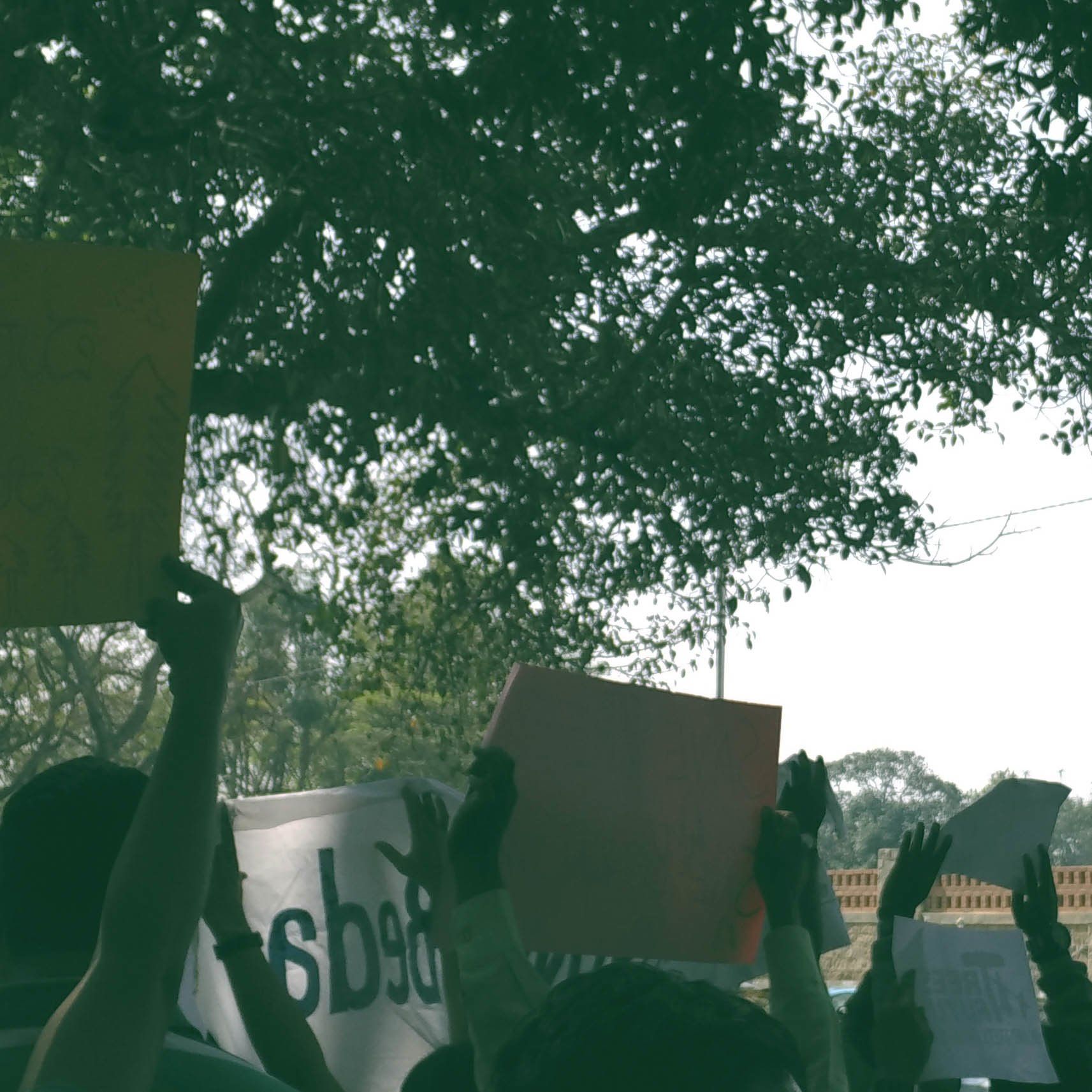
The online magazine SustainabilityNext carried an article by Benedict Paramanand titled “Has Fatigue Set into Civic Activism in Bengaluru?” The article caught my eye amidst the Covid 19 humdrum as I was looking for alternative news. I have been actively engaged in the debates around the (ill)growth and mis(management) of Bangalore for over two and half decades in my capacity as a professional planner straddling civic society, public policy circles and academia. The article revived in my mind some thoughts and suggestions that I articulate here. The attempt is not so much to answer the question, as it is to understand the shortcomings and limitations of civic activism in steering the complex politico-socio-economic and cultural layers that make up a vast conglomeration like Bengaluru. A disclaimer here merits mention. The premise that no individual stakeholder, public or private, has the knowledge and resources to tackle the wicked problems underpins successful governance arrangements. What this premise implies, by extension is that all stakeholders – public or private – have limitations. Civic Society (CS) is one amongst the numerous stakeholders that have a role – by no means a lesser one- to play. Yet, there are limitations to this role. While these limitations are embedded in the very nature of operation of the CS, there are conscious ways and means of overriding some limitations to move towards a larger impact. Bridging limitations is a critical need. Much of what I articulate while contextual to Bengaluru, perhaps holds true for civic activism across domains and geographies. To begin with, a critical question requiring reflection is the difference between civic activism and the much advocated (in (good) governance debates) Civic Society Organisation (CSO) engagement. These generally get clubbed in one category – while in theory and practice, that is not the case and therein lies the first limitation. Activism defined as direct vigorous action especially in support of or, in opposition to, one side of a controversial issue is willy-nilly an act of reaction. Reaction often leaves little space for taking distance and exploring the systemic cause of the challenge – the challenge itself sets the agenda. In contrast a proactive engagement of the civic society, through progressive partnerships while also triggered by a challenge is different in that the challenge is anticipated and therefore the agenda is set by civic society themselves. In Bengaluru, protests against the state-imposed flyover (# steelflyoverbeda ) and elevated corridors (# TenderRadduMadi ) is an example of the former. In contrast, the long-standing work on the ward committees which has seen some traction in the recent past – albeit slow and tardy – is an example of the latter. Having started as a proactive CSO engagement, the movement for neighbourhood planning and governance through ward committees (# NammaSamitiNamagaagi ) in the recent past has bordered on being reactionary, thereby hinging on activism. Although an ‘always proactive approach’ is not possible, given the capacity of our government to spring surprises, it is critical that the CS begins to move towards a proactive stance. There will always be a non-uniform interplay between being reactive and proactive. A second limitation, linked to the first, is the lack of capacity of the CS to act on relevant and practical evidence. This will require the CS to open their doors and develop progressive partnerships, including partnerships with policy makers, professionals (note that I do not use the word experts) and academia. An all-time reactionary mode of operation allows neither for collaborations nor evidence. Evidenced advocacy and conversations require domain knowledge (experienced domain knowledge is even better) which can facilitate knowledge production and mobilization. Activism hinges on passion (amongst other drivers) which is not the same as domain knowledge and knowledge mobilization. Both passion and domain knowledge have a role, yet the two can neither replace each other nor should be confused. Rather, passion that pivots on evidence and knowledge is a double-edged sword, one that has the capability to steer reactionary behavior to an informed proactive engagement. Such a move will serve to, over a period of time, course correct policies that are currently influenced by dominant political structures, electoral volatility and elite capture, as against being evidence based. A third limitation that needs consideration is the nature, purpose, goal and objective of the civic society coalition/group. Most often mobilisation is around a seemingly common purpose, goal and objective. For instance, groups that coalesced against large infrastructure projects as mentioned above or the demand for footpaths and public transit (# BusBhagyaBeku ) and sub-urban rail (# chukuBukuBeku ) are not homogeneous. It is often a mixed bag as against an imagined and perhaps desired integrated unit. Underpinning this pursuit of collective goals and objectives are individual desires, identities (which in themselves are multiple), beliefs, perspectives and previous experience, all of which are critical drivers, often leading to fragmented voices. This fragmentation notably, also derives from the inability to use evidence or domain knowledge. Elitist Activism Furthermore, activism in itself is and can be elitist. When linked to high levels of access it can be potentially hampered by what is referred to as ‘elite capture’. There are two types of activism: elite activism stemming from mobilization of charismatic individuals capable of getting their voice heard. Mass activism, in contrast, is where the general public, the haves and the have-nots, mobilize collectively. The two are not mutually exclusive, although both are critical. Barring a few occasions, Bengaluru’s activism has been elitist with a few voices that can access public policy corridors and therefore get heard. Consequently, consciously or unconsciously there is a leveraging of public policy for personal or limited gains (to a neighbourhood or a community). Activism is a luxury that not everyone can afford. Those who can afford it have a dual responsibility of using it to build bridges by roping in knowledge and experience on one hand and ensuring inclusion by creating spaces and opportunities for mass activism, on the other. The current modus operandi lacks on both counts. These shortcomings have led to what is being referred to as limited success, although limited from whose lens and success for whom is an additional enquiry, one that merits a separate post. What I do concur with is that at best the city has seen some cosmetic changes. Let me take the same two examples the article uses to demonstrate a going forward beyond cosmetic progress. First are the lakes in Bangalore that have seen a fair bit of activism. In many neighborhoods, thanks to the many charismatic residents, lakes have been claimed as better maintained natural resources. But for the initiatives of a few citizens, many lakes would have morphed into real estate projects. Yet, the same groups have done little to engage the larger neighborhoods to ensure that these natural resource ‘spaces’ become public ‘places’ for the neighborhood and the city. This would require a proactive engagement in identifying the larger neighborhood and the numerous linkages – backward and forward – that this neighborhood has had and can nurture with the lakes as public places. The second is the Tender Sure roads pioneered by Bengaluru. The implementation of Tender Sure roads is progressing incrementally moving from a pilot in the city core to radiating outwards in various directions. Putting aside the debates on the efficacy of the design as well as the appropriateness and relevance of the idea, the incremental implementation is marked by controversies on the criteria to shortlist roads such that both the visibility of and utility to the neighborhood and the city can be maximized. This too has not happened. Both these examples offer a critical insight: that the activism (and the few instances of engagement) has not translated into a thinking city. Changes are still hovering around the thinking individual. The transition to a thinking city is an emerging imperative, one that demands systemic change along various dimensions, some of which I have discussed above. To sum-up, sustained and big bang change as against cosmetic and incremental change is the need of the hour. It requires at the outset, one, more proactive engagement and less reactive activism; two, passion combined with experienced domain knowledge to trigger evidenced advocacy and change; and, three a less fragmented approach through creating meaningful spaces for mass activism along with the existing elite activism that the city has. While there may be numerous ways to act on these three, the Ward Committee space offer a ready platform for proactive action, evidence-based advocacy and wider participation. Arguably, this space is rife with political contestations and may seem a daunting challenge, yet, an engagement within this space is a surer foot forward. Clearly, there is a passion amongst Bangalore’s elite to be part of something bigger and this is a moment to be seized.

Bengaluru is subjected to yet another plan—one that aims to, yet again, make the metropolis liveable. Interestingly, yet again, the plan is opposed by various stakeholders, including citizens. The reference here is to the draft Comprehensive Mobility Plan (CMP) by the Department of Urban Land Transport (DULT) and the Bangalore Metro Rail Corporation Limited (BMRCL). The fate of the Revised Master Plan (RMP) 2031 and the Transit Oriented Development (TOD) Policy is no different. Both faced stiff opposition and continue to be in the draft stage, with little or no information on their status. The CMP evoked a massive signature campaign initiated by citizen activist groups questioning, one, the legality of who is the rightful owner of the plan; and, two, opposing the elevated corridor project that is reintroduced with a budget allocation. Interestingly, the RMP 2031 and the TOD policy were also questioned on the legality of the institution preparing it – the BDA vs the Metropolitan Planning Committee (MPC) for the former and, the DULT/ BMRCL vs the Unified Metropolitan Transport Authority (UMTA) for the latter. Thus, contestations on who should be rightful owner and driver continue to gain momentum. In reality, the three are not separate from each other. Master Plan, Mobility Plan and TOD are intrinsically connected parts of a larger whole and can deliver effectively only when they inform each other. In their current forms, this is the gravest lacuna, one that is rooted in misaligned institutions and their inherent lack of comprehending the larger urbanisation footprint, on the one hand, and the principle of subsidiarity, on the other. Mobility planning As per the National Transport Policy, a CMP should be a long-term vision for desirable accessibility and mobility for people and goods while not compromising economic, social and environmental sustainability. Contrast this with the Bengaluru CMP’s vision: ‘Efficient and Sustainable Transportation for All.’ Mobility and transportation are not synonymous. While transportation is about moving vehicles and people, mobility connotes access. Mobility planning requires a ‘people focus’ to ensure quality of life for citizens through easy access to places of work, entertainment, schools, hospitals, etc. It calls for an integration of the existing and proposed land-use with transportation, i.e. an integration of the Master Plan and Mobility Plan. The CMP uses the RMP 2031 as the starting point. Multiple policy guidelines recommend that the Master Plan should locate activities in a manner that encourages low-carbon mobility. The Mobility Plan, in turn, should facilitate access to activities. Thus, an intrinsic, iterative connection—via the TOD policy—between the CMP and the RMP 2031. What this implies is that the three should have been prepared in conjunction. Not only does the CMP come a good two years later than the RMP 2031, strangely, the thought of mobility planning is being initiated at a time when several transportation plans are underway, the Metro being a significant one. The CMP, while reviewing the RMP 2031 for land-use integration, suggests that the latter be revised to adopt the corridor [transport] driven strategy. Notably, the RMP 2031 discards the transport strategy for a differential strategy. The latter proposes varying interventions for the different zones that the city showcases. Furthermore, the suggested strategy of the CMP is premised on future developments and redevelopments to be guided by TOD to ensure work-home integration. It suggests TOD-led redevelopment and urban renewal strategy for the core area which, the RMP 2031 is not in favour of. A conundrum that gets exacerbated with every new planning instrument. Jurisdiction conundrum The CMP adds to the already messy and confused understanding of jurisdictions. The ‘study area’ that the CMP defines is completely arbitrary or, at best, emerges from a rudimentary understanding of cities and mobility. It is neither Bengaluru city, nor its local planning area. Worse still, it is not the city-region. This new jurisdictional layer will further fragment an already fragmented and siloed approach to the city. Transportation and transit have a regional character. Hence mobility plans, to ensure coverage of the catchment area of commuting trips to and from the city, should consider the city-region. Fortunately, Bengaluru metropolis is one of the few that has a well-defined region. This is ignored by the CMP in favour of a study area that comprises of bits and pieces of various jurisdictions. Sorting out the conundrum over which institution should prepare the plan, for what jurisdiction and timelines requires an urgent notification of the MPC with an embedded UMTA, although at the regional level. This is critical to address the urbanisation footprint. That all three—RMP 2031, CMP and the TOD—are still drafts is, in effect, an opportunity for meaningful alignment. Animated discussions around ward committees as platforms for future planning will operationalise the subsidiarity principle.

The draft RMP sought to lay out a blueprint with this precise objective. Amid severe criticism from the public, the plan has been in abeyance. Media reports on the cancellation of the first phase tender for the controversial elevated corridor and the introduction of dedicated bus lanes in 12 high-density corridors by November 1 signal the government’s intention to lend an ear to citizens’ demand and resolve pressing challenges in the city. If seen through, both these are merit-worthy although their reactionary nature cannot be ruled out. Steering Bengaluru’s growth and development proactively continues to be the need of the hour. An appropriate and effective planning exercise, and by extension, the plan itself — RMP 2031 — can address this need. The draft RMP 2031 is not devoid of civil society and judicial activism. The draft was opened for public comments and suggestions in November, 2017 for three months. The government received 13,000-odd comments, a dismal number for a city of 13 million that prides itself of heightened awareness. In addition, there is a case in the Karnataka High Court questioning the legalities of drafting the RMP 2031 on the premise that as per the 74th Constitutional Amendment Act, 1992, the Metropolitan Planning Committee (MPC), and not the BDA, should prepare the plan. The suggestions were scrutinised through a government-appointed six-member committee and were shared to assist plan finalisation. The RMP 2031 (to replace the RMP 2015) is delayed by four years. In its absence, the RMP 2015 continues to act as the blueprint for the city. The choice between a weak and faulty RMP 2031 and an outdated RMP 2015 is akin to a choice between the frying pan and the fire. The need for a revised updated planning tool cannot be overstated. Suffice to say that the RMP 2031 in its current avatar does not serve the purpose. Yet, the work so far has led to, at the minimum, an updated i) collation and analysis of data sets that were otherwise siloed within state departments; ii) mapping of the city; iii) demographic analysis; iv) an integrated analysis of traffic and transport and land-use planning seeking to prioritise mobility; v) a first time heritage listing in the city, to mention a few. In sum, the base data and some fundamental analyses exist, although, very soon, it will be outdated. Reportedly, public money to the tune of Rs 10 crore has been spent on the work done so far. The new government must ensure that the city has a viable plan, one that finds agreement with the numerous stakeholders in the city. Given the baseline data and the need to end the impasse, the government should commit itself to short and longterm action. Suggestions for the short-term action include: 1)Formulating a relevant and appropriate vision for the city supported by a development strategy; 2) A proposed land-use map that flows from the vision and the supporting strategy; 3) Zonal regulations that support the vision and the proposed land use normatively, are practical and easy to implement; and, 4)Most critically, laying down plan implementation and monitoring frameworks as most plans fail on this dimension. Initiate a notification In parallel, as long-term action, the government must initiate a notification of the MPC at the metropolitan region level (8,000 odd sq km comprising of several municipalities and panchayats) as against the current notification at the metropolitan area level (1,200 odd sq km comprising of Bengaluru and several panchayats), integrate the Unified Metropolitan Transport Authority (UMTA, discussed in the Draft Bengaluru Transit Oriented Development policy) and equip the BBMP to take on the planning functions for the city. In doing so, it will respect the spirit of the 74th CAA, 1992 which mandates that the MPC provide a framework for the RMP 2031 (and not prepare the RMP 2031 as argued in the writ petition) and the BBMP prepare the RMP 2031 through its ward committees as a bottom-up process. The preparation of the RMP 2031 was outsourced to a consortium of consultants. Clearly, the delivery has failed for various reasons. A possible corrective measure would require the government to set up a steering committee (comprising of trained planners /urbanists) and a team of consultants to draft a forward-looking plan. Together, the committee and the consultant should institute a process involving dialogue and negotiations among stakeholders seeking an actionable consensus. The time is ripe with the new government showing a keen interest, the transit-oriented development (TOD) policy awaiting finalisation and the ward committees getting into action. The Bangalore Metropolitan Region Structure Plan, 2031 provides the statutory guidance framework.
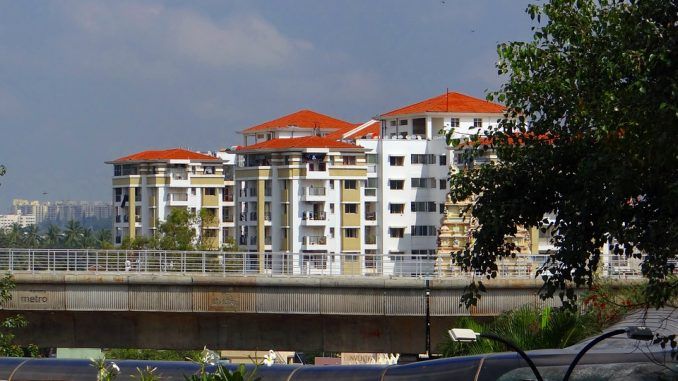
This February, the Bangalore Metro Rail Corporation Limited (BMRCL) published the Draft Bengaluru Transit Oriented Development (TOD) Policy. On inviting public suggestions and objections on the draft policy, BMRCL got just 32 responses. To put this number in perspective, Bengaluru’s total population is approximately 120 lakh, of which the working population is around 55 lakh (46 percent). Adding to this, the 5-19 age group which also needs to commute, would peg commuter numbers in the city at an estimated 77 lakhs (about 64 percent of the total population). But, only 28 lakh use public transportation. Obviously, the commuter numbers are bound to increase. The city’s master plan, the Draft RMP 2031, has projected Bengaluru’s population at 135 lakh in 2021, and at 203 lakh in 2031. Correspondingly, the commuter numbers in the 16-60 age group are likely to increase to 95 lakh (70 percent of the population) and 149 lakh (73 percent) respectively. Just 32 individuals/agencies giving feedback on a policy instrument that would impact these vast numbers is both dismal and depressing.The poor feedback is attributed to the draft policy not reaching many citizens. BMRCL had uploaded the policy online on May 8th, with a 30-day window for citizens to submit their feedback. Clearly, both the time given as well as the method of sharing and publicising the draft policy were inadequate. Wider publicity and a longer time frame could have elicited a better response. My intention here is not to get into the rubrics of an adequate public consultation process, though that is a critical challenge. The objective of this article is to suggest ways to align the philosophy and the main provisions of the TOD policy with the city’s Master Plan – RMP 2031, so as to proactively steer Bengaluru’s development. That both are in the draft stage is an opportunity the Karnataka government must leverage on priority. The TOD policy should also be aligned with the Revised Structure Plan 2031 for the Bangalore Metropolitan Region (BMR-RSP 2031), approved recently. The latter part of this article explains why. What is TOD and why is it important? TOD is a planning and land development tool that seeks to integrate transit with land use provisions, so as to reduce travel time. TOD envisages dense, mixed land use development along transit corridors. The development should provision employment centres, housing, commerce and supporting services within a walkable distance from the transit corridor and its stations (such as a Metro station, for example). The main objective is to create walkable neighbourhoods, with easy access to good public transport, so that more commuters can use public transport to reach their destinations in less time. TOD, it is argued, will create a compact and connected city; and hence generate social and economic benefits like improved health, clean environment, strengthening of local economies and arresting sprawl. In India, where affordable housing is a big challenge, TOD plans prioritise several affordable housing options – including rental and temporary shelter – within the transit zone. Thus, TOD is aimed at helping manage rapid urbanisation processes. What is Bengaluru’s draft TOD policy about? The draft TOD policy has set an ambitious agenda for itself. It aims to address challenges like rapid growth of private vehicles, inadequate road network, long commuting time, traffic congestion, road fatalities, and vehicular pollution. Acknowledging that the state government “has ambitious plans of expanding Metro and suburban rail services in the city,” the policy argues that TOD “will help mass transit to achieve its full potential and aid in sustainable mobility.” To meet its objectives, the policy adopts the 6Ds – density, diversity, design, destination accessibility, distance to transit, and demand management. Draft TOD policy isolated from several national and state policies The draft TOD policy comes at an opportune moment given that the central government is now finalising the National Urbanisation Policy Framework. In addition, the centre’s National Urban Transport Policy (NUTP 2014), National TOD policy (2017), Metro Rail Policy (2017) and National Value Capture Policy Framework constitute important reference points for the draft TOD policy. At the state/city level, the TOD policy should talk to the parking and street vending policies. The intent of all these policies are closely linked to that of the draft TOD policy. Hence the TOD policy has to refer to the larger principles of these policies, to reverse the trend of siloed policies, and thereby, siloed implementation. But the draft TOD policy is weak in straddling these policies, except for the NUTP 2014. Draft policy limited to Bengaluru Urban, confused about jurisdictions For TOD to be effective, the policy should align with the land use plans for the city and the region i.e., the RMP-2031 and the BMR-RSP 2031 respectively. The statutory premise for such an alignment is in the NUTP 2014 as well. NUTP emphasises a mobility plan that integrates both land use and transport planning, through TOD. The draft TOD policy does acknowledge the provisions of RMP 2031. But it has a muddled understanding of the planning and administrative jurisdictions of Bengaluru. What it refers to as the Bangalore Metropolitan Region (BMR), is in effect, the Bangalore Metropolitan Area (BMA – 1250-odd sq kms). The BMR is 8000 sq kms, and comprises three districts – Bangalore Rural, Bangalore Urban and the Ramanagara-Channapatna district. It comes under the planning jurisdiction of the Bangalore Metropolitan Regional Development Authority (BMRDA). In contrast, the BMA is spread across just 1250-odd kms, and comprises of the Bangalore Urban District alone.
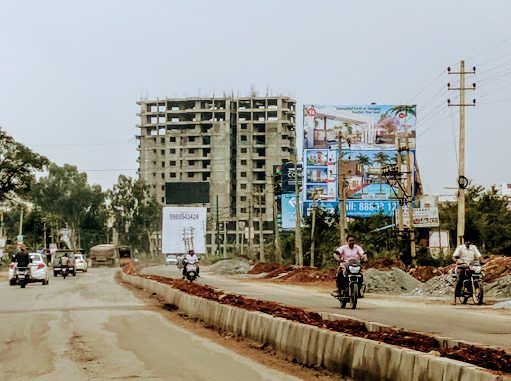
Recently, Deputy Chief Minister G Parameswara suggested banning apartment construction in Bengaluru for the next five years. His announcement invited strong objections from the real estate industry. Just a day after, the shares of Bengaluru-based real estate giants Shobha and Brigade plunged five percent. However, Parameswara’s suggestion resonated with many citizens who have been facing the brunt of water shortage. Questions remain – at what pace is apartments coming up in the city currently, and would restricting new constructions improve the water situation? Apartment sales and launches on the rise Bengaluru’s real estate market is slowly picking up pace after the sudden policy changes (read demonetisation) that had affected industries. According to a report released this May by Liases Foras, a research and rating company, the city’s residential real estate sales had increased by 14 percent in FY 2018-19 compared to the previous year. The number of new launches – that is, real estate that developers start marketing – has been increasing in Bengaluru as well. Across the eight tier-1 cities included in the Liases Foras report, the number of new launches had increased by 80 percent on average in 2018-19 compared to 2017-18. But in Bengaluru, new launches had increased by 96 percent. This rate of increase was second-highest in the country, after Pune.
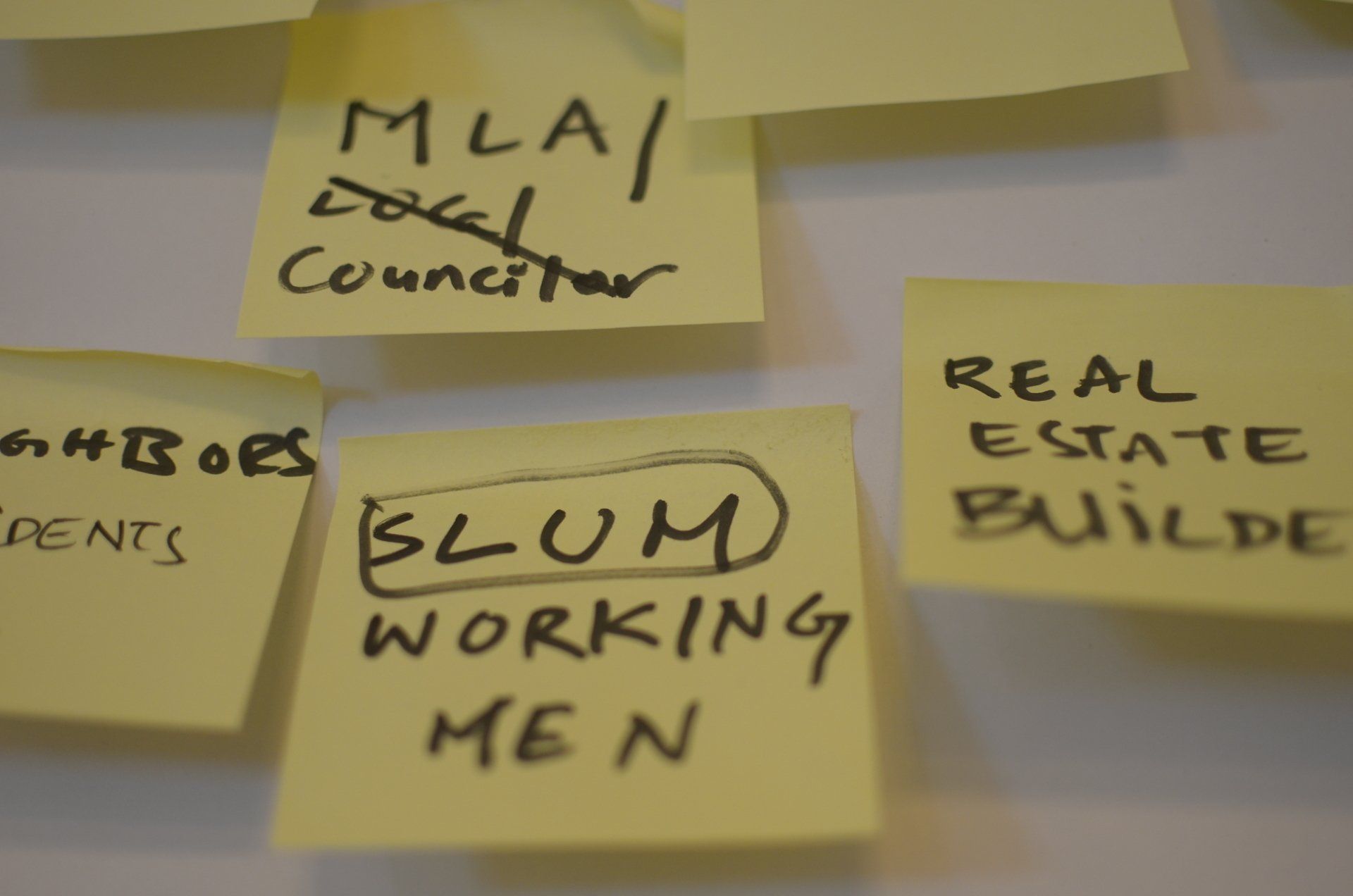
There is a lot of excitement around urban data and its merits are visible; yet, there is a gap between what is being discussed as potential and, what is being practised, says Dr Anjali Karol Mohan, an expert in urban e-governance. In over two and a half decades of practise and research, Dr Mohan has engaged with various urban planning and urban management exercises, evolved planning tools, and evaluated plans to provide inputs to policies and effective planning exercises. Currently, Dr Mohan is curating a two part seminar series (at the EAFIT University in Medellin, Colombia and NLSUI, Bangalore, India) that aims to address planning challenges faced by cities in the global south. Dr Mohan is a visiting Faculty at the National Law School University of India, Bangalore, International Institute of Information Technology Bangalore, and Takshashila Institution. 1. Recent governance dialogues revolve around data driven governance and its benefits. What in your opinion are the main challenges in implementing data-driven governance in the urban or rural space? In my opinion, there are two challenges; one is the data itself and second, the people who will be using that data. The first challenge lies in the lens through which data is viewed by different scales of governments and, by extension, the manner in which the data will get utilised. Therefore, although large datasets are being produced and collated by various governments, departments, and hierarchies, the scale, granularity, and periodicity of that data is from a particular lens. This might make it not so useful for other stakeholders. For instance data produced by State departments, for instance, to monitor local governments, may not be required by municipalities and panchayats whose roles and responsibilities are different. The second challenge is, who are the people using this data. There is a gap in capacity in terms of using data in a consistent and lucid manner so that it enables decision-making. While the first challenge might be resolved if we unpack and understand the requirements of different lenses, but the second is a much more daunting challenge. This is where one needs to get functionaries and managers in various arms of the government into the habit of looking at data to inform their decisions. This not only requires building their capacity, but also increasing their will power for the same. 2. Is there a greater possibility of data usage by different stakeholders if data culture is institutionalised to some extent by target-oriented reforms? Data generation, capture, analytics (as we understand it today in the context of the technology revolution), and its utilisation are not systemically embedded in governance structures and processes. There is a lot of excitement around data and perhaps people are beginning to see the merits of it. But there is still a gap between what is being discussed as potential and what is being practised. There are arguments that technology-driven data culture demands a generational change, i.e. next generation of city managers are more likely to be tech savvy and hence, better equipped to appreciate the relevance of technology in generating and collating data, converting that data into information, and eventually to knowledge. But I think that the new generation will only be able to do it if they are capacitated in a manner where data-driven decision making is the only choice. This requires not just conventional approaches through training programmes, but also a change in work culture, habits, and practices. Having said that, I have come across several municipalities where data entry operators, typically from a younger generation have begun to comprehend the efficiency that a computer brings in, and are taking to technology even if it requires them to leverage their own personal resources. From your experience, how do cities perceive capacity building efforts, especially efforts that emphasise the creation of new positions in municipalities, such as city data officers? Historically, within the states, skill sets that can engage with technology and tech-enabled data are lacking. Attempts have been made to implement municipal reforms in various states — Karnataka has been a front runner in this. Similarly, there is a digital presence in Panchayats too. Commensurate with these reforms, is the hiring of data-entry operators/programmers and setting up of data cells. This is an ongoing effort. Notably, in several places, staff associated with the data cells are employed on a contract basis (although I am given to understand that recruitment and cadre rules are being modified to embed these skills within the state). While it may serve the purpose of initiating technology driven reforms, in the long run, my experience (and research) shows that the data cells do not get integrated within the municipalities. In effect, these emerge as parallel systems. It is about time that measures are initiated to ensure integration of data and data-related functioning within the municipality. This has far reaching implications on accountability mechanisms, which tend to get compromised in the presence of parallel systems. 3. Do you think that the Smart Cities Mission and other technology-focussed initiatives are able to bring convergence between the State’s perspective of why they need data and the municipality’s perspective of how efficiently they can use the data? That the Smart City Mission has foregrounded the need for data (incl. data-cells, observatories, etc.) as critical to urban development and management cannot be denied. There is a flurry, at times incomprehensible, around data production and collation. It is happening at several points. However, I maintain that data requirements from various lenses need not necessarily converge. The need for varying data-sets at different scales of government cannot be questioned. There can be multiple points of data generation, collation, and utilisation, as long as there is clarity on the purpose for which data is being generated and analysed. For instance, in cities, data generated at ward level needs to reach the municipality to facilitate decision making. The State government may apply its own lens to view/collate this data — like seeing how one city is performing in comparison to the other. We need to understand that technology has this inherent tendency to centralise actions. I am not for a moment arguing for or against centralisation or decentralisation. Both are required. One to the exclusion of the other is not advisable. However, where centralisation is appropriate and where decentralised interventions/actions are more relevant, needs to be unpacked carefully. For example, beneficiary selection for welfare programme in rural areas is a function best performed at the lowest level of governance. Usually, selection is based on the Socio-Economic and Caste Census (SECC), 2011, followed by Gram Sabha verification. Yet, of late, we see State Governments using technology to directly select or indirectly impact beneficiary selection processes. This is dangerous. 4. There is an increasing emphasis on data for decision making, whereas entirely data-driven decisions can have their own biases. How should the discourse position itself so that we have enough checks and balances built into the system itself? Institutionalisation of data can start to, in some sense, institutionalise decision-making. There will be a record of why a certain decision was taken and what the implications would be if we were to reverse this. The precaution that needs to be taken here, is that the data needs to be very relevant and context specific. That can only happen if we align principles of decision making with the idea of subsidiarity. That is what the decentralisation agenda is all about. If the local government has to take an informed decision, the most relevant data is what is generated within its jurisdiction. It is a hugely positive step if a decision-maker is able to visualise data and then utilise it, to frame problems and challenges, and seek appropriate solutions / redressal mechanisms. In the discourse about data, observatories, and decision making, the lack of emphasis on the need for contextualisation, is the reason many cities are not able to move ahead on data-driven decision making. 5. Do you see the National Urban Policy Framework, currently being finalised, likely to emerge as an enabling tool facilitating data-driven urban governance? The NUPF is still in its making. Notably, it recognises the prerogative of the State as far as local governance is concerned. It can provide a critical space for data-driven decision making by triggering the need, incentivising it, and further creating opportunities for State policies to do the same. While planning and governance are viewed as two different processes, these are intrinsically connected. The NUPF attempts to bring these together, but I don’t think it goes far enough. The NUPF should ideally incentivise proactive planning, and make data-driven decision-making a part of that narrative. How exactly it would be implemented should be left to State policies, as contexts vary across states. The NUPF needs to create this space by providing a broader framework for proactive planning with data as one of the dimensions which will inform both planning and governance.


